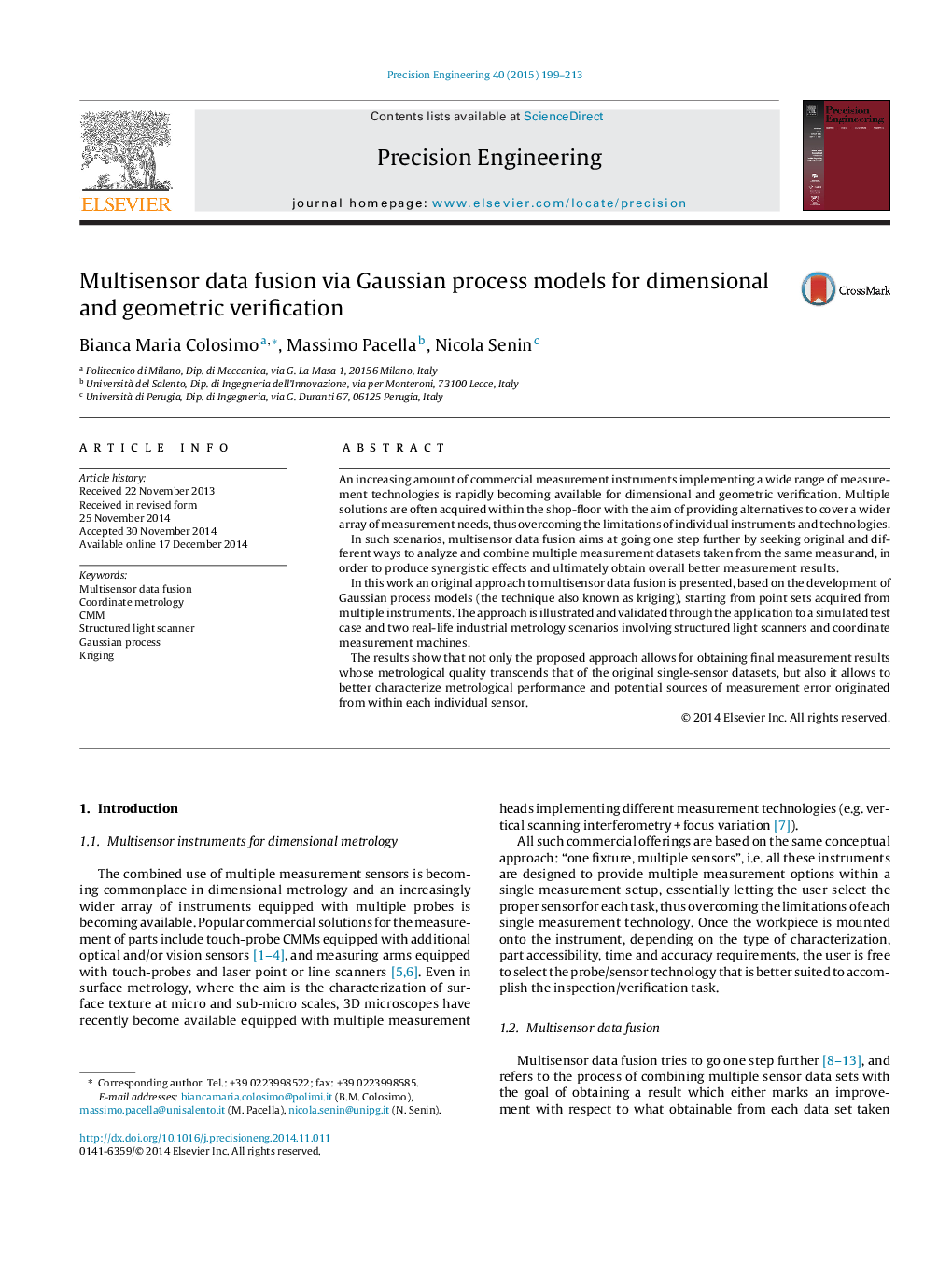| کد مقاله | کد نشریه | سال انتشار | مقاله انگلیسی | نسخه تمام متن |
|---|---|---|---|---|
| 801319 | 1467848 | 2015 | 15 صفحه PDF | دانلود رایگان |
• Fusion of data from optical scanners and CMMs for inspection and verification of free forms is investigated.
• Fusion results in a statistical model, which is based on Gaussian process, of the reconstructed geometry.
• Measurement estimates and associated prediction intervals at a given confidence level can be obtained from the model, also at locations not sampled by the original measurements.
• Fusion can also compensate for local error introduced by individual sensors (e.g. reduce local bias).
• The random components of the measurement errors can be estimated and included in the model and their effect on the final reconstruction error is studied.
An increasing amount of commercial measurement instruments implementing a wide range of measurement technologies is rapidly becoming available for dimensional and geometric verification. Multiple solutions are often acquired within the shop-floor with the aim of providing alternatives to cover a wider array of measurement needs, thus overcoming the limitations of individual instruments and technologies.In such scenarios, multisensor data fusion aims at going one step further by seeking original and different ways to analyze and combine multiple measurement datasets taken from the same measurand, in order to produce synergistic effects and ultimately obtain overall better measurement results.In this work an original approach to multisensor data fusion is presented, based on the development of Gaussian process models (the technique also known as kriging), starting from point sets acquired from multiple instruments. The approach is illustrated and validated through the application to a simulated test case and two real-life industrial metrology scenarios involving structured light scanners and coordinate measurement machines.The results show that not only the proposed approach allows for obtaining final measurement results whose metrological quality transcends that of the original single-sensor datasets, but also it allows to better characterize metrological performance and potential sources of measurement error originated from within each individual sensor.
Journal: Precision Engineering - Volume 40, April 2015, Pages 199–213
